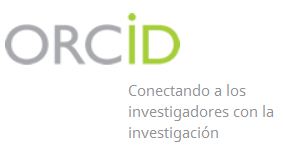Meaningful learning about biosafety through interactive infographics
Keywords:
infographics, medical education, innovation, meaningful learning, focus groups.Abstract
Introduction: Implementation of various interactive resources in the classroom encourages new educational strategies and builds innovative experiences among professors and students. In this respect, infographics, as a learning object, complements the content available in virtual environments and generates reflective, cooperative and autonomous learning environments.
Objective: To identify appreciations, attitudes, experiences and perspectives regarding the meaningful learning of biosafety through the use of infographics.
Methods: A qualitative study was carried out using the focus group technique. A script was prepared based on the concerns obtained from feedback, several questions were formulated and, later on, the answers were recorded on audio. For discourse analysis, basic categories were defined and adjusted as the testimonies were reviewed, based on the grounded theory method. Once the categories were identified, the objective, the documents and the previous studies were triangulated.
Results: The contents of the focus groups’ transcript were integrated and analyzed. Four basic categories were constructed, which included students' understanding of the formative function of the process, students’ empowerment, management of conflicts, and some suggestions for improvement based on the students’ perspective.
Conclusions: The focus group technique was a valuable tool for learning about the development of new digital content, through infographics as a didactic strategy, a fact evident in dynamic, flexible, participatory and motivating educational processes that promote meaningful learning, collaborative work and critical thinking.
Downloads
Downloads
Published
How to Cite
Issue
Section
License
Los autores conservan todos los derechos sobre sus obras, las cuales pueden reproducir y distribuir siempre y cuando citen la fuente primaria de publicación.
La revista se encuentra sujeta bajo la Licencia Creative Commons Atribución-No Comercial 4.0 Internacional (CC BY-NC 4.0) y sigue el modelo de publicación de SciELO Publishing Schema (SciELO PS) para la publicación en formato XML.
Usted es libre de:
- Compartir — copiar y redistribuir el material en cualquier medio o formato
- Adaptar — remezclar, transformar y construir a partir del material.
La licencia no puede revocar estas libertades en tanto usted siga los términos de la licencia
Bajo los siguientes términos:
- Atribución — Usted debe dar crédito de manera adecuada, brindar un enlace a la licencia, e indicar si se han realizado cambios. Puede hacerlo en cualquier forma razonable, pero no de forma tal que sugiera que usted o su uso tienen el apoyo de la licenciante.
- No Comercial — Usted no puede hacer uso del material con propósitos comerciales.
- No hay restricciones adicionales — No puede aplicar términos legales ni medidas tecnológicas que restrinjan legalmente a otras a hacer cualquier uso permitido por la licencia.
Avisos:
- No tiene que cumplir con la licencia para elementos del material en el dominio público o cuando su uso esté permitido por una excepción o limitación aplicable.
- No se dan garantías. La licencia podría no darle todos los permisos que necesita para el uso que tenga previsto. Por ejemplo, otros derechos como publicidad, privacidad, o derechos morales pueden limitar la forma en que utilice el material.


